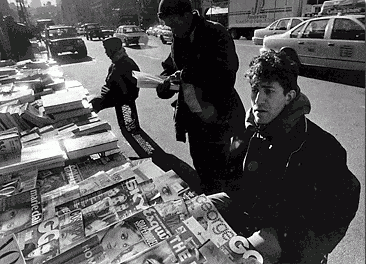Sidewalk 1/8 https://www.youtube.com/watch?v=Bv4civR8mSI
Sidewalk 2/8 https://www.youtube.com/watch?v=AwED4pGqIe4
Sidewalk 3/8 https://www.youtube.com/watch?v=AuYgqCtZ8H0
Reflection
What information did you learn about the main character/s in the movie?
In Sidewalk we explored the lives of people, many homeless, who make their living by selling goods on the sidewalk. I learned the personal histories of people like Ron, Hakim and Alice. People who sold what they found in the trash and called it a hunt. How they ended up on the street. For some it was alcohol or drugs. Some never got the education they needed to hold a stable job or go to college. One, a Jamaican immigrant, was brought to the United states as a child and struggled to make a living until he was deported to a country where he knew no one. He was routinely beaten because of his past drug use and the stigma against drug users in Jamaica. One woman, Alice, was able to reconcile with her husband after so many years of living on the street. She moved to Virginia to live with him and started working at a 7/11. She recalls her memories of living on the streets with fondness and sometimes pretended that she was still there selling on the sidewalk.
What research method/s the filmmakers use in the documentary?
The biggest research method used that really helped them navigate and document this life was ethnography. Ethnography is when you join the people or idea you are ‘studying’ in order to truly feel what it was like to live like them. Of course we can only empathize with the more long term hardships many of them faced but it still was a useful tool in getting others to trust the film makers. They weren’t just interested in knowing how they lived they wanted to experience it.
What questions do these videos provoke?
I think, for me and others, the questions that come to mind are ones that revolve around a solution. How can we help these people? How can we keep people off the streets in the first place? How did they end up on the streets and what could we have done to prevent that? How many people are living like this? When we see an issue played out over time and we see all the crevices that issue holds we see how deep it runs. We know they can be living better lives, but they aren’t.
What social support and structure in society you observed?
The people on the streets supported each other but they also supported those who lived in their communities who were upper class. They taught each other how to make it, worked together and provided an emotional support that they had lost when they became homeless. There was also many people who offered help in going as far as letting them into their homes and trusting them to get magazines or books they can only get from them. There was a different kind of social contract between the people on the sidewalk.
What problems do you identify in the life of the sidewalk participants?
There are many issues of course the first being homelessness. Which comes with a lack of hygiene, food, shelter. There was also the danger of selling without a permit which is specific to the sidewalk participants. They lived in a nomadic way, they weren’t staying in one place. But one noticeable problem to me was when one of them did manage to get a small room, but when he did get a bed he couldn’t sleep in it. He preferred sleeping on the solid ground after the number of years he spent homeless. He grew accustomed and comfortable this way. The transition was an issue they didn’t talk much about. Even Alice when she moved in with her husband. She had a longing for New York that was only partially filled with her job at 7/11. She would pretend she was still selling on 6th avenue. This was one problem that stood out to me, the transition into a ‘normal’ life. It was hard for them to come to terms with their experience, to just jump back into a life when they had become so used to another.



